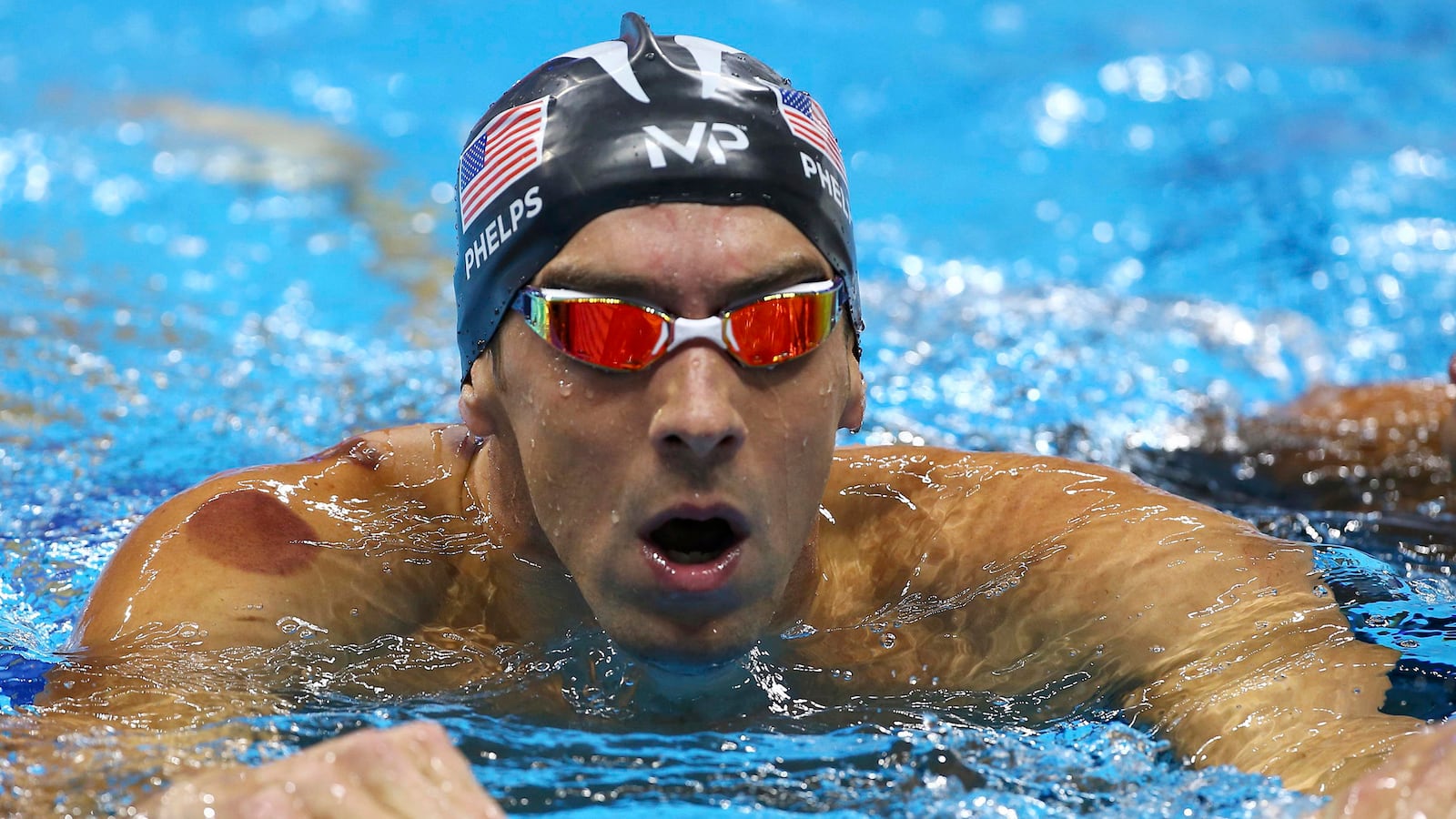When the gold medal is on the line, Olympians will try anything to get results. The latest fad making its mark in Rio is “cupping,” an ancient Chinese therapy meant to increase circulation, alleviate pain, and, some say, sedate the nervous system. The treatment– often performed in tandem with acupuncture– involves heating glass suction cups and placing them on sore muscles.
While athletes have chosen bloodless “dry cupping” over “wet cupping”– which involves cutting the skin– dry cupping still creates a signature mark: a giant bruise. The negative pressure and suction are believed to increase blood flow to the muscles by stimulating them.
Team USA members Michael Phelps and Alex Naddour (gymnastics) have popularized the treatment, sporting the tell-tale red polka dots on their backs, arms, and legs.
While the cupping trend seems to just be reaching Olympic athletes and Hollywood stars– Lena Dunham, Gwyneth Paltrow (soon-to-be-former-queen of GOOP), and Jennifer Aniston have all endorsed cupping– it has a rich history and many contemporary consumers. The treatment is widely used in China, where it was established as an “official therapeutic practice” in the 1950s and remains popular, in both hospitals and traditional Chinese medical centers.
Many historians date the practice back to 3000 BCE; written records of cupping come from The Egyptian Ebers Papyrus (around 1550 BCE), one of the first medical “textbooks,” and Hippocrates describes using cupping to treat muscle problems and internal disease.
Pavel Sankovich, a swimmer from Belarus, has also spoken out on social media about the pain-reducing technique, posting an Instagram picture with the caption “Cupping is a great recovery tool.” Natalie Coughlin, who swam for the U.S. in the 2004, 2008, and 2012 Olympics, has also posted pictures of herself receiving cupping treatments.
Critics of alternative medicine describe the treatment as bogus, including Dr. Rachel Vreeman, an assistant professor at Indiana University School of Medicine. "Though some studies show cupping may have some effect, the science isn't good and the trials are at a high risk of bias,” Vreeman told Fox News Health, “We need more research.”
While the cupping marks will fade after three to four days, the fad will stick around for much longer.






